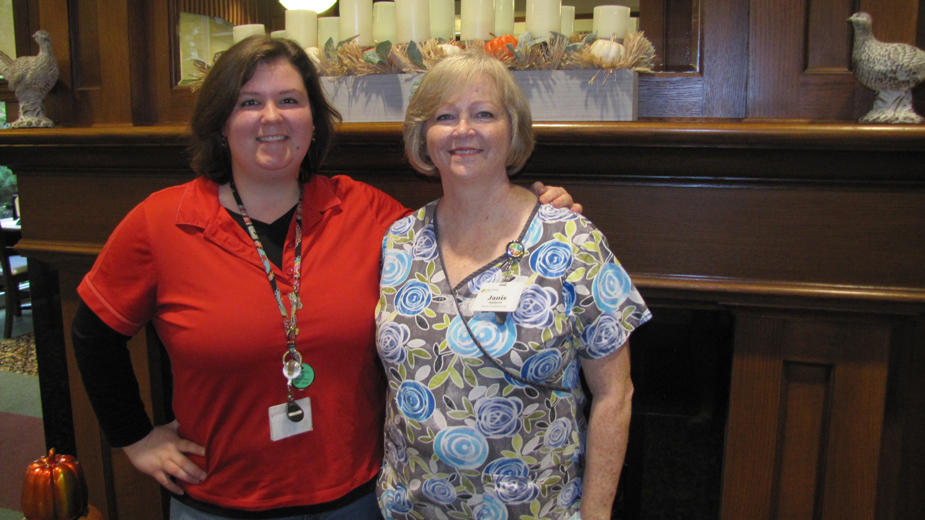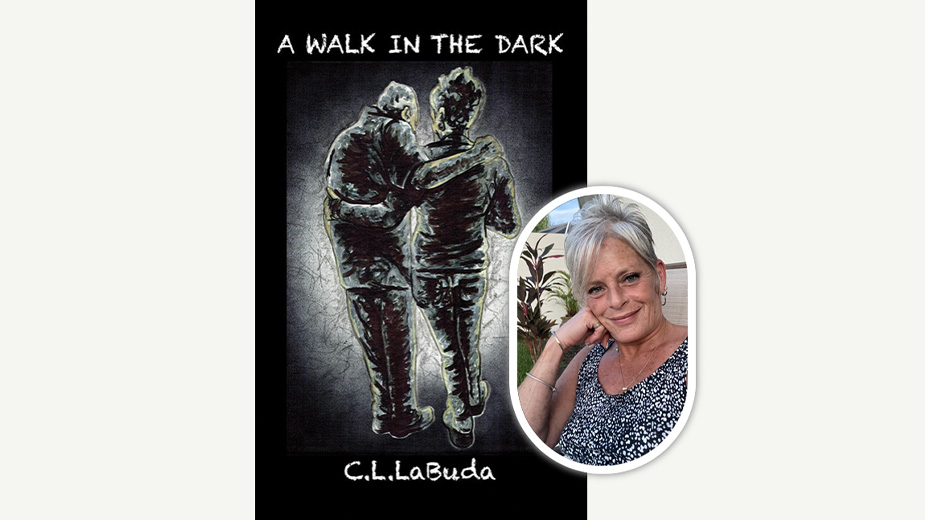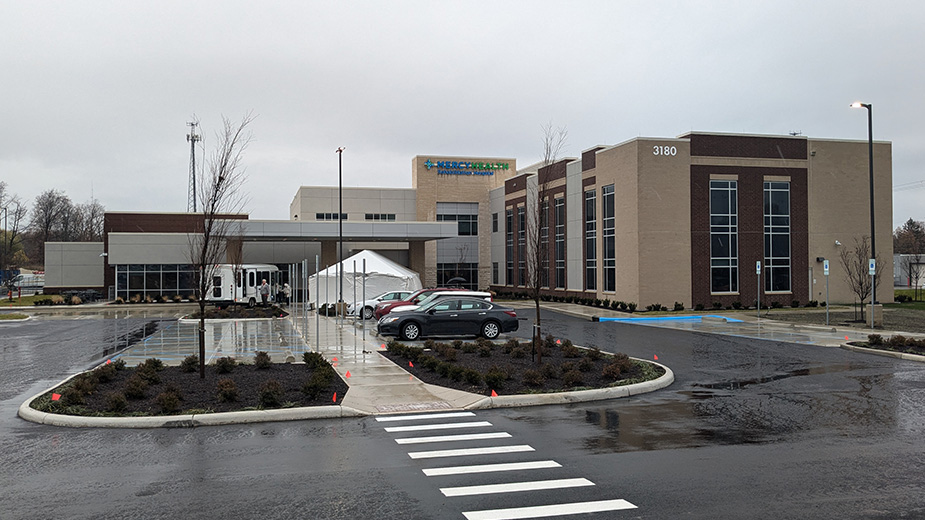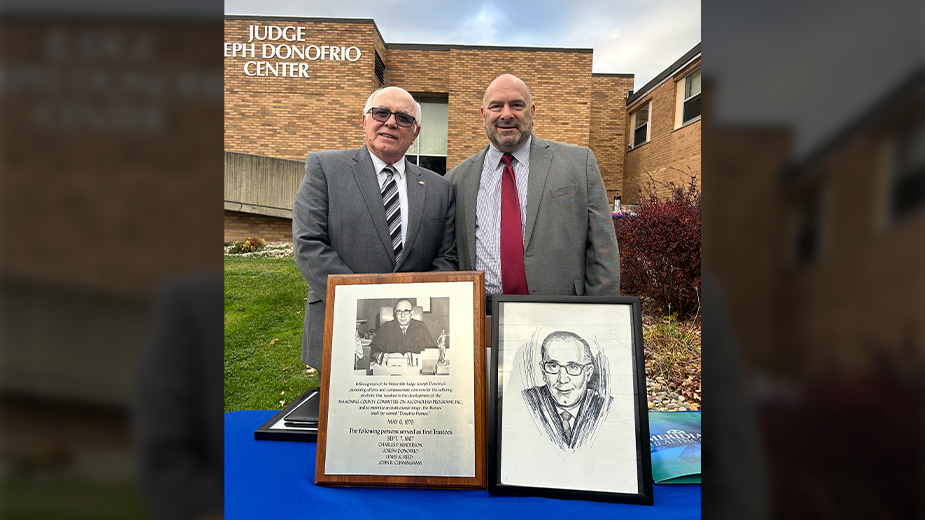Caregivers Learn to Take New Approach for Dementia
YOUNGSTOWN, Ohio – BilliJo Byram puts on a pair of glasses that reduce her peripheral vision and skew her depth perception. Then she puts on a set of headphones that create white noise so her hearing is limited to picking up only the murmur of people’s voices. Next she pulls on a pair of gloves that cause her fingers to lose their sense of feel.
That done, Byram is told to complete five tasks: feed the dog, find the white shirt and button it, put shoes in the box, zip up a coat, sweep debris into the garbage can.
“You get onto one task and it’s difficult to complete and you get onto the next task. And by then you forget the other three,” says the activities assistant for Ohio Living Park Vista’s Eden Dementia Unit in Youngstown. “The point is to help you understand what people [suffering from dementia] might be going through.”
The activity Byram completed is part of the training program, Dementia Live, that was implemented a few months ago at Park Vista. Dementia Live was created by AGEucate Training Institute.
“Dementia Live trains caregivers with what it’s like to be a person with dementia,” says Park Vista’s speech and language pathologist, Linda O’Brien. “We’re not going to change the individual with dementia. We’re going to change our thoughts and how we work with the individual.”
This type of training reflects the “person-centered care” that caregivers apply so they can meet the needs of every resident with dementia.
Settings in the region that have designated dementia-care units include Park Vista, Copeland Oaks in Sebring, Briarfield’s The Inn at Poland Way and Windsor House at St. Mary’s Alzheimer’s Center in Columbiana.
Care given to residents with dementia has changed considerably, says Janis Syphard, director of assisted living at Park Vista. “When I first started, it was all about bringing the residents here to this moment instead of going to where they’re at in their mind,” she says. Syphard has been in nursing for 38 years and points out that once there were no special programs for residents with dementia.
Another new program, Compassionate Touch, is a holistic therapy taught to the staff and used to calm anxious residents through physical touch, such as massaging a resident’s hand or soothing a resident by grooming his hair. Another program, CARES Dementia Basics, consists of group classes held twice a week that are “all about how you connect with a person with dementia,” Byram says.
“Understanding what dementia is helps you to understand and rationalize how these people are acting,” she elaborates. “If you understand that Mom’s brain doesn’t understand how to stand up anymore and that’s why she refuses to use a walker, you might be more patient with her.”
Symptoms that accompany dementia include loss of memory, a decline in cognitive ability and changes in behavior.
Marilyn King, a villa resident at Copeland Oaks, began seeing these symptoms in her husband, Christopher, in 2007 when they lived on a 68-acre tree farm in Minerva.
At first, he began to lose things frequently – his keys and wallet – she says. Later he couldn’t figure out how to put the mower on the tractor even after looking at the instruction book. “He was a very mechanical kind of person,” King says. “We knew then that something was wrong.”
A physician recommended that King’s husband see a neurologist. In 2009, he was diagnosed with Alzheimer’s disease, the most common type of dementia that accounts for 60% to 80% of cases, according to the Alzheimer’s Association.
The Kings moved into a villa at Copeland Oaks because the Crandall Medical Center on campus has a designated memory care center.
King is a retired nurse and her husband was an ophthalmologist for 30 years. Even though they were both in the medical field, she says, they still didn’t know what to expect because every case of Alzheimer’s is different. “I think we were more equipped to know where to go for help,” she says, “but emotionally I don’t think we were any more prepared.”
Her husband died this year at the memory care center. “It’s a different kind of experience because it’s a long, slow death. So the grieving is a long time,” she says. “Even though there are books, we don’t realize what to expect and how to handle certain situations.”
At The Inn at Poland Way, a resident enters the memory care unit when the family of the person with dementia can no longer provide a safe environment.
“There are so many different characteristics,” says Executive Director Debbie Lepore. Two characteristics of a person with dementia that could create a dangerous environment are wandering and short-term memory loss. Such memory loss keeps the sufferer from remembering what just took place and daily functions.
Lepore says the staff goes through special training to take care of dementia residents, which includes ongoing education.
“You have to know what their likes and dislikes are and you have to know when there is something that’s going to start a behavior,” Lepore says. Most residents with dementia are unable to voice what is bothering them, which can cause them to act out or engage in a “behavior.”
At St. Mary’s Alzheimer’s Center in Columbiana, an orientation program teaches the staff how to handle residents. For example, when a resident becomes combative, the staff makes sure he is safe and then walks away for five minutes. Then another staff member approaches him. “They’re not going to remember what happened five minutes ago and you might get a totally different reaction than how they were acting,” says Miriam Maughan, nursing home administrator.
Monitoring a person’s changes in behavior and having daily activities on a tight schedule is critical for keeping the residents calm, she continues.
“You get to know the residents and their behaviors. When something is not right, you notice right away,” she says. “If someone paces all day long and all of the sudden they stop pacing, something’s not normal for them.”
Having organization also keeps the residents calm. “It’s a home away from home but in a scheduled setting,” Maughan says. “It’s organized chaos, but there’s got to be organization because the residents at that stage of their Alzheimer’s need that.”
Working with a resident at the pace he is comfortable with also makes a difference, Maughan says, such as when it comes to feeding or giving someone his medication.
“A lot is on approach. You have to be calm and tell them every step of the way what you’re doing because they have no concept of what you’re doing,” she explains. “You definitely need patience.”
Pictured: BilliJo Byram and Janis Syphard completed Ohio Living Park Vista’s Dementia Live program.
Copyright 2024 The Business Journal, Youngstown, Ohio.



